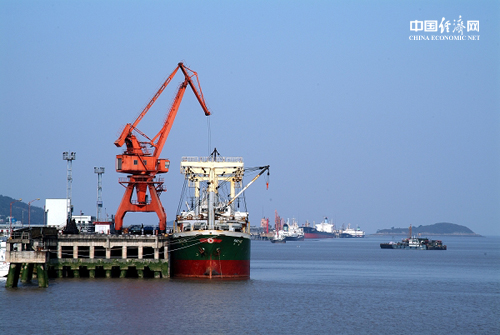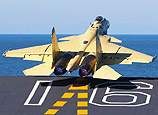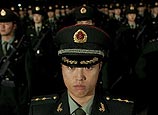
 |
| Currently, China's total marine output value accounts for 9.7 percent of the GDP. (Photo/CE) |
In 2001, the total output value of China's marine industry was less than RMB 1 trillion Yuan; in 2011, the number reached 4.56 trillion Yuan, an average annual growth of 16.7 percent, significantly higher than the growth of the GDP. Currently, China's total marine output value accounts for 9.7 percent of the GDP, making it a new growth engine for the national economy.
Thriving industry
Propelled by governments of all levels, China's marine economy has been on a path of rapid development and continuous growth in the past decade. The industry has developed from its early form that centered on marine fishing industry and marine salt industry into a rather complete industrial system that is led by transport, coastal tourism, marine oil and gas, and shipbuilding and substantially supported by emerging industries such as marine power industry, water utilization, marine biomedicine, and marine technology education service.
China's traditional marine industries continue to make progress. Its ocean shipping capacity continue to improve, with more than 20 ports that have a shipping capacity of over 100 million tons and ranking first in the world for seven years in a row in terms of cargo throughput. China has become one of the biggest producers of marine oil and gas in the world -- in 2010, production of marine gas and oil, for the first time, exceeded 50 million ton oil equivalent, which makes it a "Daqing on the sea". China's shipbuilding capability has improved on all levels: in 2011, the completion quantity, the quantity of orders in process, and the quantity of new orders all ranked first in the world. Marine aquaculture capacity and distance water fishing capacity have improved significantly, and the processing and exporting capability of marine aquatic products has been growing unceasingly.
Marine strategic emerging industries that are supported by marine high technologies have been developing rapidly at an average annual rate of more than 20 percent, making it the biggest highlight in the reform of China's marine economy or even the Chinese economy as a whole. In 2011, the added value of the sea water utilization industry was about RMB 1 billion Yuan, double that in the early Eleventh Five-year Plan; the added value of the marine renewable energy industry was nearly RMB 4.9 billion Yuan, more than 10 times that in the early Eleventh Five-year Plan. Besides, the development of a number of new industrial forms, such as cruise ship, yacht, recreational fishing, marine culture, and marine-related financing and shipping industry, has accelerated.















 Bullet train attendants receive trainings in China's Shenyang
Bullet train attendants receive trainings in China's Shenyang


![]()
